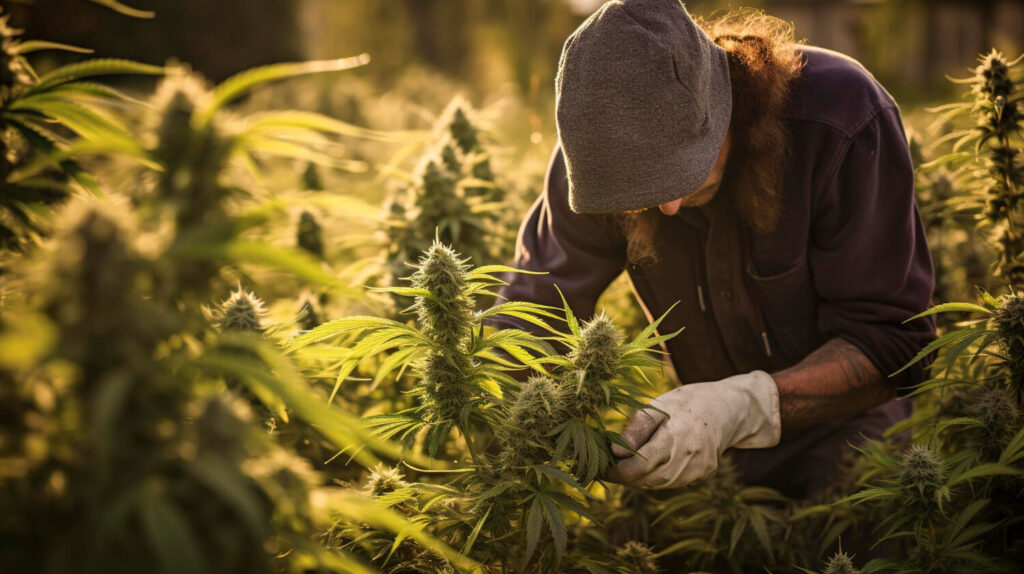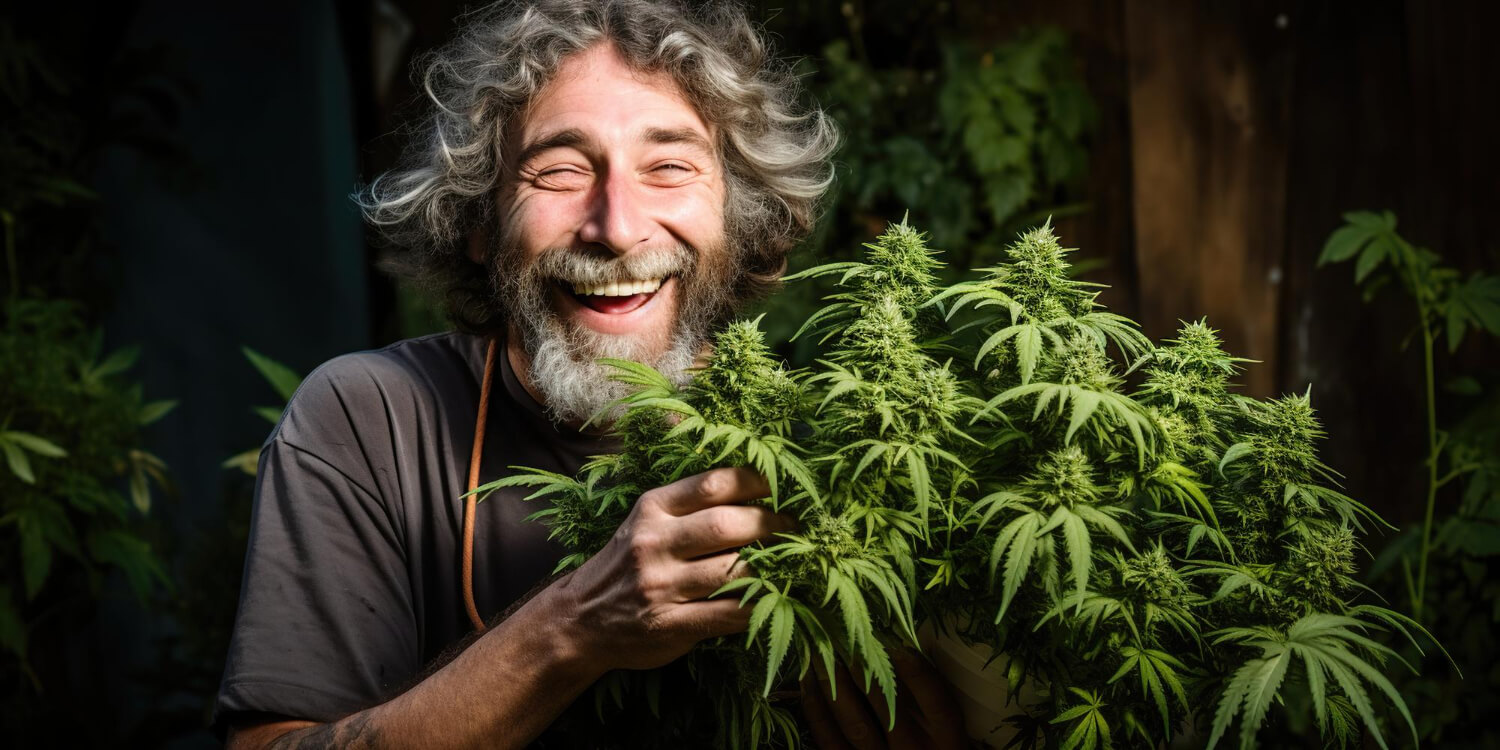When you first start researching how to grow cannabis plants from seeds, all the different parts can make it daunting. But by breaking the growth cycle down into six stages, cultivating cannabis becomes much less scary. Cannabis plants are incredibly durable, and I always recommend the K.I.S.S approach when starting out, because for most at-home growers, it’s going to provide them more than satisfactory yields, and it keeps the hobby fun!
Germination Stage
Visual cues are a big thing when growing cannabis, and you should be using them right from the beginning when selecting the best seeds to plant. Healthy and mature seeds are firm to the touch. They can range from light tans with speckles to solid dark browns.
A very popular method for germinating seeds is the paper towel method, which involves placing the seeds in a lightly damp towel and sealing them in a container/bag. I find planting seeds directly into their starter medium works best. Regardless, keep temperatures between 70-85°F and the seeds away from direct light.
Often, you can see the radicle root start appearing just 2 to 3 days after planting, but it’s always a good idea to give a seed 10-14 days to work its magic before deciding if it’s viable. Typically, around 3 to 5 days, you will see the seed emerge from its medium. You should see two rounded leaves (cotyledons) that will provide the seedling with all the nutrients it needs during the first week or so.
Seedling Stage
Thanks to the cotyledon leaves, you will not need to give your plants fertilizer for 1-2 weeks. As such, you just need to focus on providing optimal light, humidity, temperature, and water. For lights, a starting DLI (daily light integral) between 12-16 should promote rapid growth without stressing the fragile seedlings. Keeping temperatures between 75°F to 85°F and humidity over 60% are the general recommendations for this stage.
If you’re hitting all your parameters and pushing light intensity, you’ll need to start fertilizer sooner rather than later. Plants will start fading, trading their vibrant green for a faded yellow, indicating it is time for nutrients. Start with a 3-1-2, 2-1-2, or 3-1-3 NPK fertilizer — you don’t need those exact numbers, just the ratios, e.g. that 2-1-2 could be a 20-10-20. Your grow medium will greatly influence just how much you should give them.
Vegetative Stage
When your plants have 5-7 nodes (the point on a stem where a leaf or branch attaches), they are in the vegetative stage. Plant growth (especially the vertical kind) will start significantly increasing, so it’s time to start training your plants with plant training techniques such as topping and low-stress training. Both techniques can be incorporated for the best of both worlds. When pruning your plants to break apical dominance and expose future bud sites, start with just 1-2 cuts and allow the plants to recover before going at them again.
As plants mature, start working your humidity down while staying in the same temperature range. A VPD (vapor-pressure deficit) of 0.8-1.2 promotes healthy transpiration for late veg/early flowering. Speaking of flowering, once plants are about half the desired final size, you can go ahead and change your light schedule to initiate the next stage.
Pre-Flowering Stage
The pre-flowering stage kicks off when plants are given no more than 12 hours of light and typically lasts for 2 to 3 weeks. Growth is incredibly rapid during this point, and healthy plants will double to triple in size. Expect to use plant training techniques every day, focusing more so on low-stress training e.g. scrogging vs. removing plant material — light lollipopping is OK.
After about a week, your plants will start revealing their sex. Male plants typically reveal their sex organs about a week earlier than female plants and should be removed unless you’re planning to breed. Around the 2-week point, you will start noticing white hairs appearing on the female plants. This is generally when you’ll start seeing growth slow down, indicating the flowering stage is right around the corner.
Remember to increase your light intensity due to the plant receiving fewer hours of light. Some cultivators will do this right away so their plants are receiving the same DLI of light as they were during veg. Others will wait and slowly increase over a few weeks.
Flowering Stage
Once you notice vegetative growth slowing down in favor of flower development, your plants are officially in the flowering stage. Up til now, I haven’t recommended you change your fertilizer yet, but those flowers are sinks for phosphorus and will steal it away from the rest of the plant, so we need to slightly increase our phosphorus amount. I don’t recommend switching from a vegetative fertilizer to a bloom fertilizer, as it will probably have way too much phosphorus and not enough nitrogen. 3-2-2, 3-2-3, 2-1-2 ratios should all work great for flowering.
The increase in phosphorus will coincide with the swelling stage of the flowering phase. During this point, the cola will start engorging and become incredibly dense if given optimal light. Speaking of light, some growers — like me — will be pushing more light here than at any other point, while others will have their DLI at levels lower than what their plants saw at times during veg.
After the buds stop swelling and the pistil hairs start turning orange, it’s time to start monitoring the trichomes for changes in color. Most growers harvest when the large majority of trichomes are cloudy, while having an equal number of clear to amber trichomes.

Harvesting Stage
Pre-harvest
I like to think the harvest stage starts about 2 weeks before we actually chop our plants down. When you notice bud development slows down and the trichomes are heavily turning cloudy, it’s time to start reducing both the amount of water and fertilizer you’re giving. You don’t need to flush as it’s bad for the environment and studies show it does little to nothing, but feel free to forgo fertilizer and even water the week before you harvest — just make sure flowers don’t dry too fast.
Harvesting
To harvest, you can remove the branches off the main stem or cut the whole plant down at the base. You can hang the entire plant up to dry, but I recommend separating any big colas that are touching each other to discourage mold and mildew.
Drying
You want to slowly dry your buds out, aiming for at least a week or two. The slower the better! Some aim for a month, but that increases the chance of mold and mildew. Once flowers feel dry when lightly touched, but still damp when pressed on, it’s likely time to move them to the curing stage. To confirm, try snapping some stems — small ones should snap, while big ones should only bend.
Curing
If you haven’t yet, it’s time to remove most of the stems and leaves from the buds before placing them in jars or bags to cure. When curing in jars, you will need to burp the jars every day whenever humidity levels reach 70% or greater. Once humidity in the jars sits at a stable 62%, jars only need to be burped 1-2 times more a week apart.
Final Thoughts
Producing high-quality flowers starts the second you plant the seed. But thankfully, cannabis is one of the most forgiving plants around, so don’t knock yourself too hard for mistakes and please experiment with different ideas and techniques.
During the seedling stage, cannabis plants are fragile, but thanks to their cotyledon leaves, you won’t need to give them fertilizer right away. Thankfully, that fragility goes away during the vegetative stage, where plants will continue to produce new leaves and branches as long as they get more than 12 hours of light.
While some of the early fragility comes back during the flowering stage, much of the work you did in veg provided your foundation, allowing you to focus on monitoring your plants and making small adjustments as needed. Last, make sure you are always working to perfect your dry and cure so you can reap your plants’ maximum potentials.





